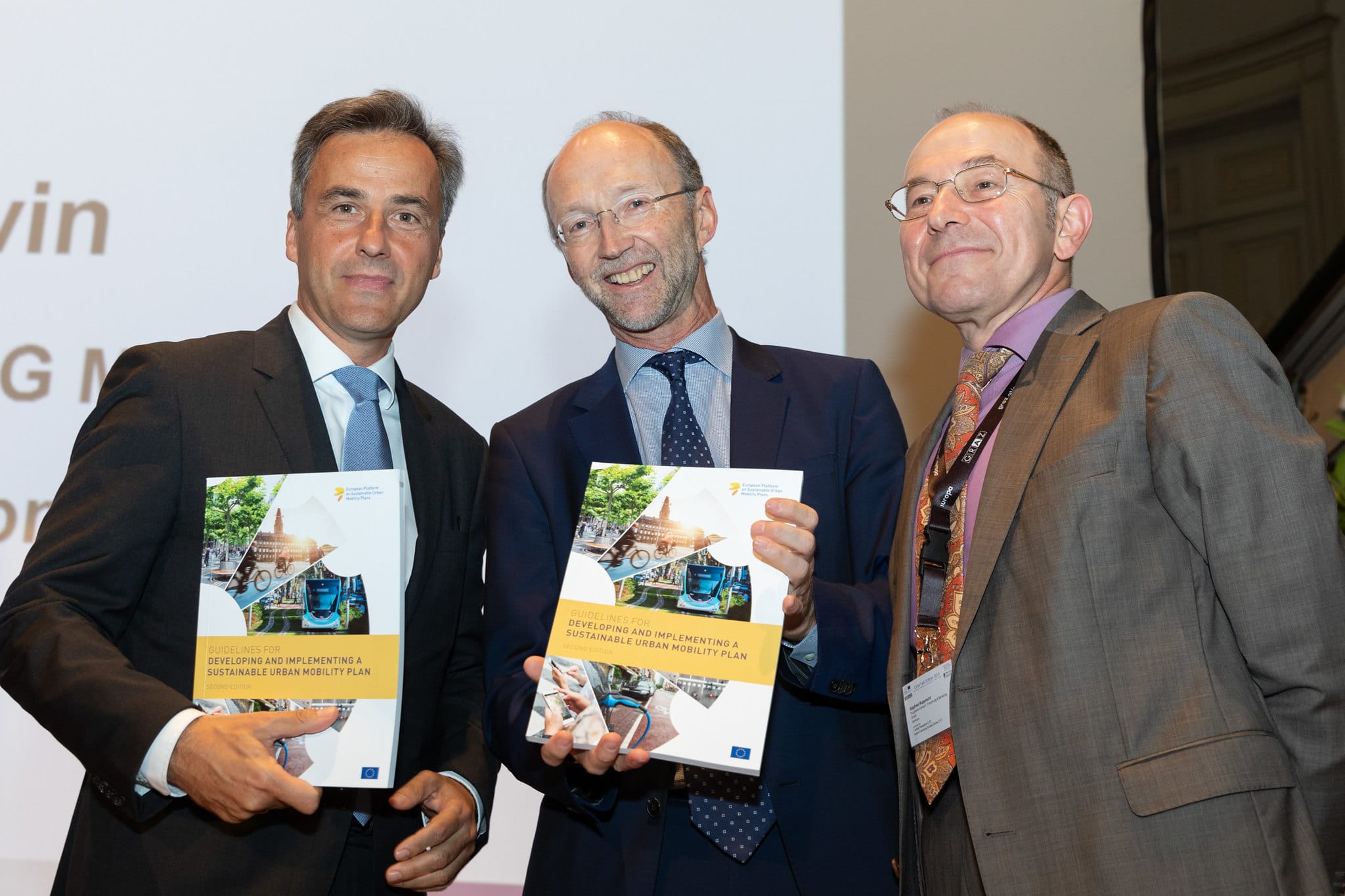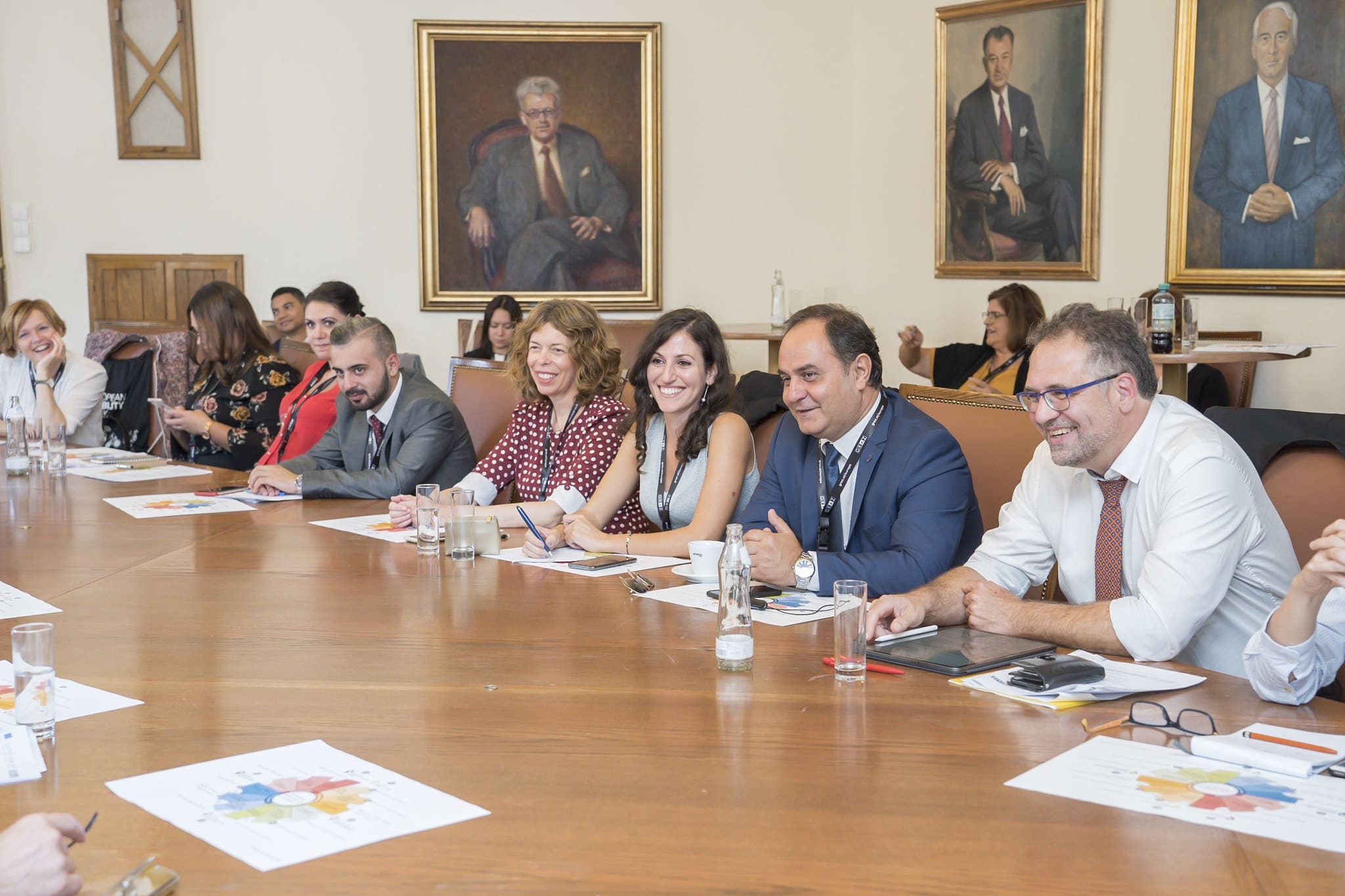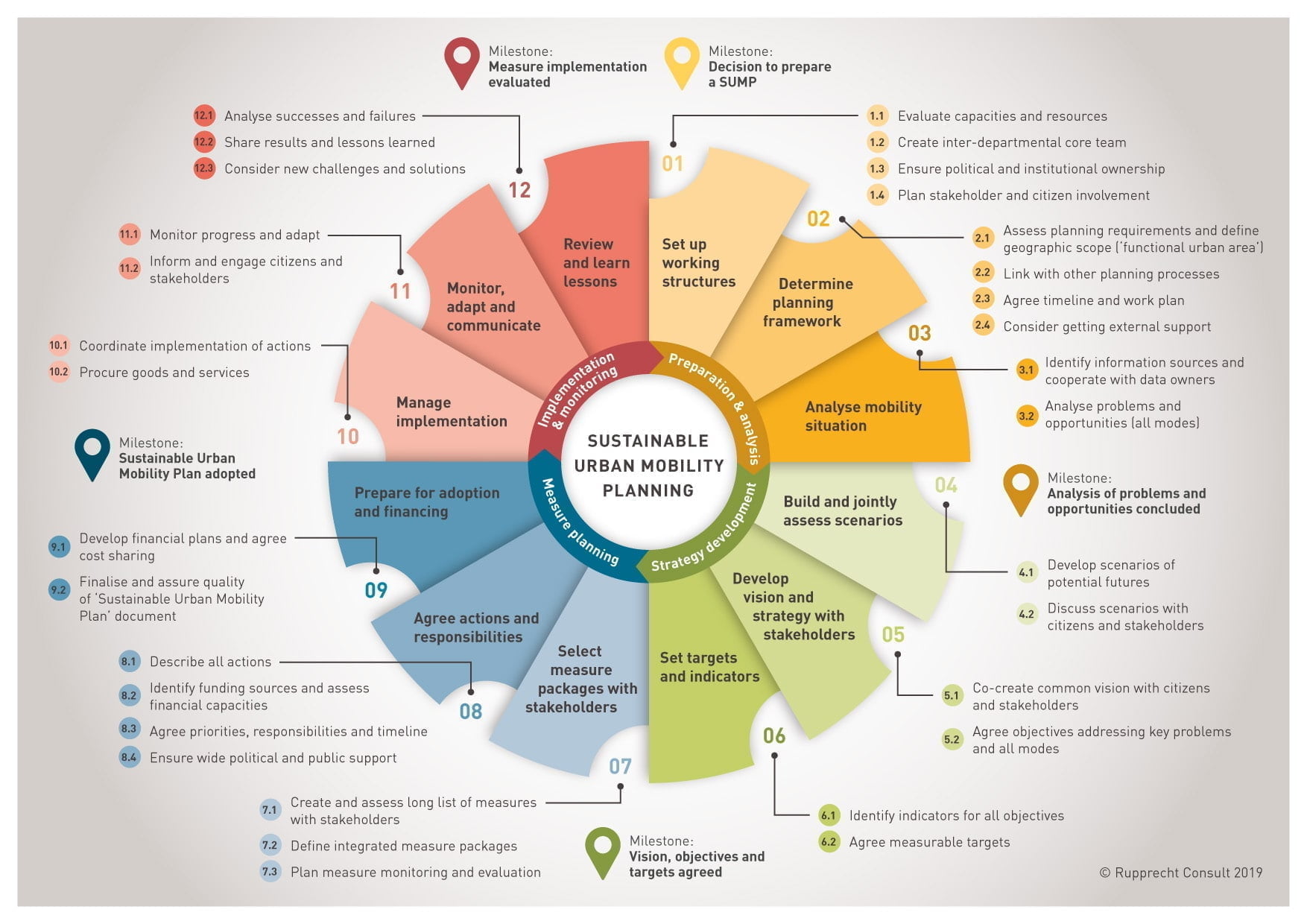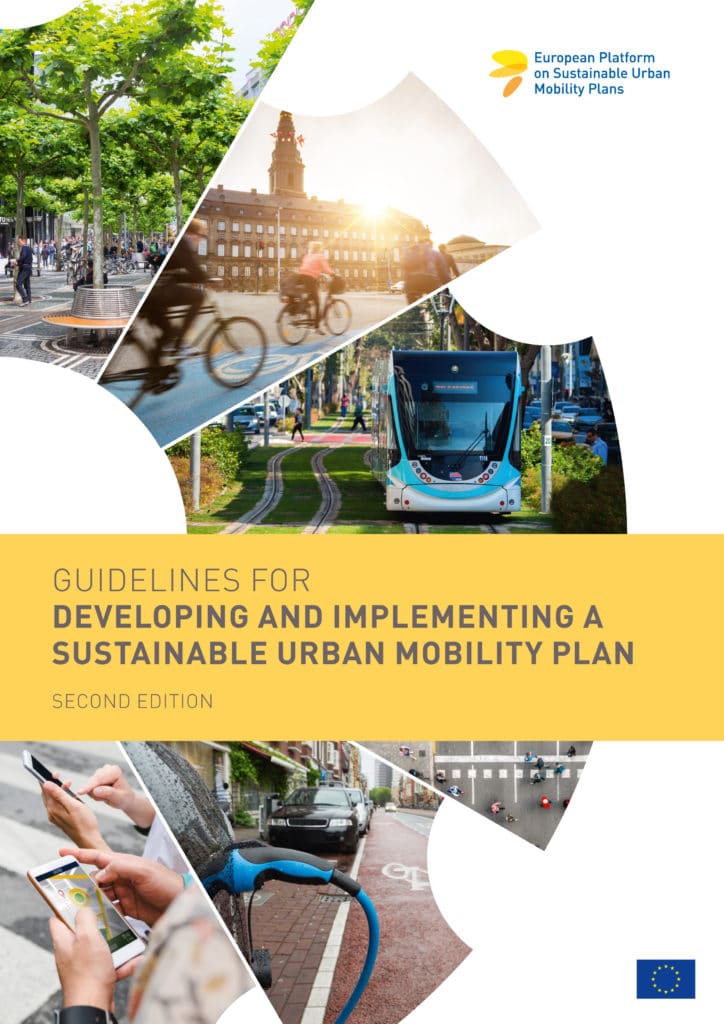Develop, implement, change
The second edition of the EU SUMP Guidelines sets new standards for innovative sustainable urban mobility planning, supporting cities and regions to initiate positive change for the future, as Lisa Marie Brunner and Lasse Brand elucidate
Every Friday, young people are taking to the streets demanding urgent action from decision-makers to tackle the climate crisis and safeguard their futures. In these times of protests and global climate agreements, practitioners and politicians need support and guidance to deliver the change needed.
Indeed, European cities that want to become more liveable for their inhabitants, that want to achieve a mobility shift, and that want to prosper whilst reducing CO2 emissions and improving air quality, cannot address the challenges associated with today’s complex transport systems alone.
That is why the arrival of the second edition of the Guidelines for Developing and Implementing a Sustainable Urban Mobility Plan (SUMP) is of immense importance. Released on 2 October 2019 at the CIVITAS Forum 2019 in Graz, Austria, they support planners and policy makers to create their own SUMPs.
In this way, they can integrate sustainable mobility into their visions for liveable cities – suitable for current and future generations. Sustainable urban mobility planning sets new standards for more innovative and inclusive transport planning, and helps cities and regions to integrate all transport modes and encourage a shift towards more sustainable mobility.
SUMPs contribute to realising key European mobility goals, such as better air quality, improved accessibility and mobility, increased road safety, decreased traffic noise, higher energy efficiency, and enhanced quality of life. A state-of-the-art SUMP is increasingly seen as a must-have for aspirational cities.
"A SUMP is a very new and innovative tool we've had in place since 2013 to help the cities and regions of Europe to incorporate sustainable mobility principles into their day-to-day planning activities" - Matthew Baldwin, Deputy Director-General, DG MOVE, European Commission
Why did the SUMP Guidelines require an update?
Since the release of the first edition in 2013, SUMPs have become an indisputable success story – there are now over 1,000 plans in Europe. Yet this vast amount of activity means that a wealth of SUMP implementation experience has accumulated; something that needs to be incorporated into guidance on the subject.
At the same time, much has changed in the world of transport. Rapid digitalisation, the spread of smartphones and high-speed internet, an explosion of internet shopping and parcel delivery, and the rise of micromobility are only some of the developments that have serious implications for urban mobility planning.
Mobility habits and awareness are also undergoing a change – with a shift from owning to sharing, increased active mobility, and a greater understanding of the relationship between public health and transport.
Irrespective of whether people agree on the aforementioned factors being those that will fundamentally change the “urban mobility game”, it is clear that a strategic document such as a SUMP has to consider and reflect new realities.
Finally, all of this is set against the backdrop of increased societal awareness of the environmental emergency confronting the world, and transport’s central role in causing and overcoming it.
The first copies of the document were presented to Matthew Baldwin, Deputy Director-General of DG MOVE, European Commission, Siegfried Nagl, Mayor of Graz, and Siegfried Rupprecht, Executive Director, Rupprecht Consult (the main authors of the Guidelines).

Handover of the SUMP Guidelines. L-R: Siegfried Nagl, Matthew Baldwin, Siegfried Rupprecht
The members of the CIVITAS Political Advisory Committee (PAC) and CIVITAS Forum network also welcomed this milestone release with an endorsement. This was signed by numerous politicians in the PAC.
The SUMP 2.0 process
The process to update the SUMP Guidelines – called SUMP 2.0 – started in 2018. The document produced was the result of an extraordinary co-creation process. Over the course of 18 months, more than 300 people from Europe’s SUMP community contributed their expertise.
A special Editorial Board was engaged to steer this vast undertaking. This included members from the European Commission’s DG MOVE, DG REGIO and INEA, the CIVITAS SUMP projects, Eltis, JASPERS, and leading mobility researchers. In this way, the document draws on immense European knowledge in the field. The project CIVITAS SUMPs-Up coordinated the authorial process.
The document has been developed and validated in close cooperation with the SUMP community. Starting with a large survey and dedicated session at the SUMP Conference 2018, a number of workshops, focus groups and conference sessions with practitioners and other experts from all over Europe have taken place. Involving several major city networks in the update ensured that feedback from cities and regions of all types was included.
"Flexibility is one of the biggest strengths of the concept. Whilst the eight SUMP principles stand firmly, the process for applying them offers great flexibility. We know that every city is different."
The new SUMP Guidelines
The work of 100 authors and contributing authors is contained within the Guidelines. Its 166 pages guide practitioners and decision makers through how to develop and implement a SUMP using a step by step approach. This is complemented by a range of recommendations regarding tools, methods and good practice examples from cities all over Europe.
Whilst the SUMP concept and its eight fundamental principles have stayed the same, the recommended process for achieving them has been updated and improved.
 The new Guidelines offer clear systematic advice, but highlight the flexibility of the process and the importance of adaptation to the local and national context.
The new Guidelines offer clear systematic advice, but highlight the flexibility of the process and the importance of adaptation to the local and national context.
They provide more support for important horizontal aspects, such as citizen engagement, political decision making and monitoring. To make the document as hands-on and practically useful as possible, good practice examples and planning tools are heavily featured in the update.
More than 60 examples from cities all over Europe give inspiration on what SUMPs can look like in practice. Although the document was primarily developed with planners and decision makers in mind, it also contains a comprehensive introduction to sustainable urban mobility planning for those with less knowledge of the topic, including an updated description of its benefits.
The SUMP Cycle
The new SUMP Cycle presents a balanced SUMP process, consisting of four phases. Each of these contains three steps, and starts and ends with a milestone. The strategic planning stage (phase 1 and 2) and the operational stage (phase 3 and 4) are clearly separated, as they often have different time logics.
The new version also contains more detailed guidance on the operational phases, specifically on how to select measures; to finance and plan them; and to implement them successfully. Whilst the cycle provides helpful systematic guidance with clearly ordered steps and activities, every SUMP will of course be different. In fact, the order of steps usually varies from city to city.
SUMP is going global
The aim of the Guidelines is to offer wide and strong support for cities that wish to develop and implement a SUMP. Planners and decision makers from European cities are the major target group of the Guidelines, but SUMPs are also spreading beyond Europe.
For example, the MobiliseYourCity Partnership shows how the concept – with its inherent flexibility – is being taken up in South America, Africa and Asia. To support this trend and reach even more cities, in particular more non-English speakers, the SUMP Guidelines will be translated into numerous languages.

The new SUMP Guidelines are a tool to initiate and manage change for cities. The manner in which they can be adapted to the specific circumstances of individual cities and countries means they are perfectly suited to the fast changing and increasingly complex world of mobility planning, regardless of location.
"The new thematic guides complement the main Guidelines. They are all based on the eight SUMP principles, but offer more in-depth recommendations." - Siegfried Rupprecht
Further guidance
Together with the main document, 17 complementary topic guides and practitioner briefings have also been released, with more to follow in the coming year. They offer additional guidance on difficult aspects of the planning process, important policy fields, and for specific types of cities.
In addition, an updated version of the SUMP Self-Assessment online tool will be released soon. This will help cities identify the strengths and weaknesses of their planning approach and provide them with tailored advice for further improvement based on the new Guidelines.
FYI
Lisa Marie Brunner and Lasse Brand are Urban Mobility Consultants at Rupprecht Consult
The SUMP Guidelines and all of the topic guides and practitioner briefings can be downloaded on the Eltis Platform: https://www.eltis.org/mobility-plans/sump-guidelines
